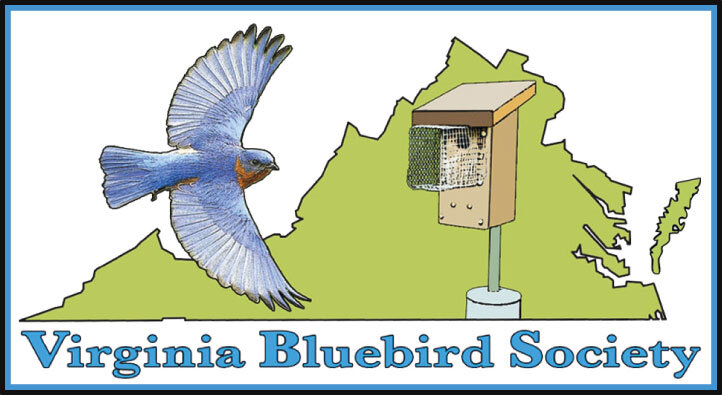Predators & Pests
Wasps – Scrape out nest, rub bar of soap on inside of roof and/or sides of box to discourage them. Keep boxes away from pine trees. This website provides additional information on the European Paper Wasp.
Snakes – Eggs of young disappear but the nest remains intact. Predator guards eliminate most snakes but they can drop off trees. Position boxes away from trees or overhanging branches.
Squirrels, raccoons, opossums – Nest is destroyed and eggs and/or young are gone. Use Noel guard over the hole to discourage these predators.
Cats – Can jump as high as six feet straight up and kill the adult birds as they are feeding the young, or they can perch on box and pull babies out of the nest. Use wire guard over the hole to protect adults and babies.
Wrens – Can be a problem on a bluebird trail. They may build “dummy” nest in many boxes and may pierce the eggs of bluebirds to reduce competition for resources. If wrens are a problem, move boxes at least 50 yards from brush or trees. By law, active wren nests cannot be removed. Wrens are native species.
Ants – Put a small amount of Vaseline around the pole way up underneath the snake guard. Be careful to keep the Vaseline away from the possibility of getting onto the feathers of the birds. If nest is infested, build a new nest out of dry grass, transfer eggs and/or young to new nest and discard old nest into a plastic bag.
House Sparrows – Adult and/or young found dead in box with head pecked in. Sparrow may start new nest on top of dead birds. Remove any house sparrow nests and eggs from box. Place nest and eggs in a zip-lock plastic bag and carry away from nest so predators are not attracted to the area and sparrows cannot conveniently reuse the materials for their next nest. House sparrows will re-build every week all summer long, so be persistent – they are hard to discourage. Traps are an effective way to reduce or eliminate sparrow problems. Trapped sparrows must be dispatched. Wildlife rehabilitators often accept sparrows to feed birds of prey. House sparrows are not native species and are not protected by law. They are killing our songbirds at an alarming rate and displacing them in their nesting cavities.
Blowflies – Adult flies lay eggs in box, larvae that suck the blood of nestlings at night. During day larvae can be found on the floor of the nest box. Check under nest and check nest material for signs of larvae. Young in infected boxes may also have visible scars. Brush larvae out of box. If number of larvae is large (50+), make a new nest and carefully put young in your “handmade” nest and discard old nest into a bag.
